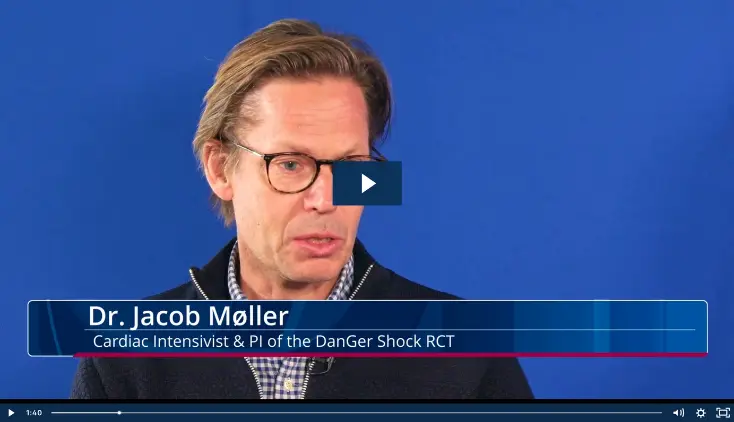Complete Revascularization, Protected PCI
Acute Coronary Syndromes and High-Risk PCI: State of the Art - Predictive Value of Residual Syntax Score for Clinical Outcomes After High-Risk Percutaneous Coronary Intervention
York Data Analysis (Part II)
In the presentation titled “Predictive value of residual SYNTAX score for clinical outcomes after high-risk percutaneous coronary intervention (HR-PCI): Evidence from pooled analysis of prospective studies,” Vasileios Panoulas, MD, and colleagues present results from an investigation of the relationship between completeness of revascularization (CR), New York Heart Association (NYHA) Heart Failure Functional Class and 90-day left ventricular ejection fraction (LVEF) in patients undergoing high-risk percutaneous coronary intervention (HRPCI) with hemodynamic support from either a percutaneous left ventricular assist device (pLVAD) or intra-aortic balloon pump (IABP).
Panoulas et al. hypothesize that more complete revascularization during HRPCI may contribute to higher EF and better NYHA Class Allocation 90 days post-PCI. NYHA and EF have been shown to strongly predict long-term survival, heart failure hospitalization risk and quality of life (QoL). Additionally, they hypothesize that pLVAD support during the procedure may lead to better outcomes compared to the same revascularization performed with IABP.
In this analysis, Panoulas et al. pooled individual patient data (IPD) from the PROTECT II randomized controlled trial (RCT) and the RESTORE EF prospective multicenter study to obtain NYHA and EF data at 90 days post-PCI. Treatment group (pLVAD or IABP), baseline age, gender, race, baseline NYHA class, baseline LVEF, baseline SYNTAX score and post-procedural residual SYNTAX score (rSS) were available for all patients included.
“These data further support the need for complete revascularization in this patient population and help make additional therapeutic decisions post-PCI.”
To assess improvement in NYHA class, the study looked at 641 patients (484 who received pLVAD and 157 who received IABP). They found that baseline SYNTAX score, rSS and LVEF at baseline were significant predictors of NYHA class at 90 days post HRPCI. A single unit decrease in rSS was shown to increase the odds of improved NYHA class for the patient at 90 days compared to baseline by 2.2%±1.0% (p=0.021). Looking at only the PROTECT II patient group (178 who received pLVAD and 157 with IABP), postprocedural rSS was the only significant predictor of NYHA class at 90 days with every unit decrease in rSS increasing the odds of NYHA improvement by 3.0%±1.2% (p=0.017).
To assess improvement in EF, the study looked at 622 patients (405 pLVAD and 217 IABP). Baseline SYNTAX, rSS, and baseline LVEF significantly predicted EF at 90 days. A single unit decrease in rSS lead to an absolute higher LVEF at 90 days of 0.246%±0.05% (p<0.001). For the same level of revascularization, pLVAD-supported procedures resulted in an absolute higher LVEF of 4.759%±1.21% (p=0.001).
The authors conclude, “Completeness of revascularization, as measured by level of reduction in rSS after HRPCI, is significantly predictive of NYHA class improvement and ejection fraction gains at 90-day follow-up. pLVADs were also shown to further increase LVEF at 90 days vs. IABP. These data further support the need for complete revascularization in this patient population and help make additional therapeutic decisions post-PCI.”
Key Points and Take Aways
- SYNTAX score, residual SYNTAX score (rSS) and LVEF at baseline were significant predictors of NYHA class at 90 days post HRPCI with a single unit decrease in rSS increasing the odds of improved NYHA class for the patient at 90 days compared to baseline by 2.2%±1.0% (p=0.021).
- Baseline SYNTAX, rSS and baseline LVEF significantly predicted EF at 90 days with a single unit decrease in rSS leading to an absolute higher LVEF at 90 days of 0.246%±0.05% (p<0.001).
- pLVADs were shown to further increase LVEF at 90 days vs. IABP.
- For the same level of revascularization, pLVAD-supported procedures resulted in an absolute higher LVEF of of 4.759%±1.21%(p=0.001)
- Strong signal on the existence of separate mechanisms of efficacy in pLVAD-Protected PCI; specifically:
- Extent of Revascularization
- Quality of Revascularization (Intracoronary Imaging Optimization, Bifurcation Techniques, Decalcification Strategies, etc.)
- Intraprocedural Ventricular Unloading leading to Improved Myocardial Protection enabling Heart Recovery
- “These data further support the need for complete revascularization in this patient population and help make additional therapeutic decisions post-PCI.”
NPS-3777


